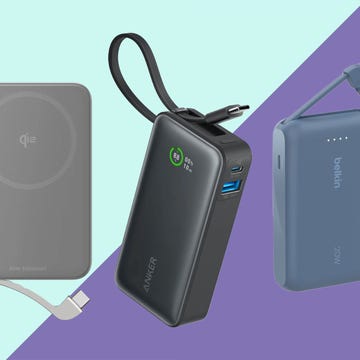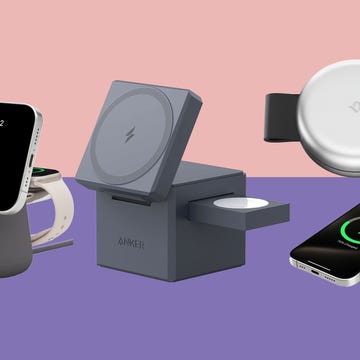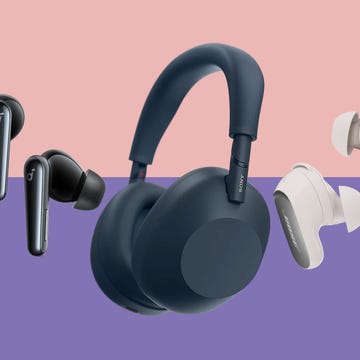We earn a commission for products purchased through some links in this article.
The best tablets for streaming shows, work and browsing, from under £100
Great slates for streaming and browsing
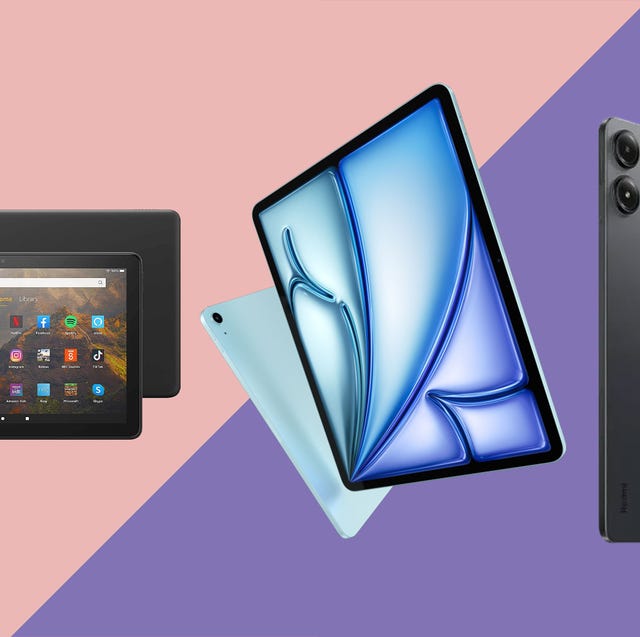
Sometimes even the best smartphone displays just don’t cut it, particularly if you’re following along with a recipe, reading lengthy articles or watching your favourite Netflix shows while lounging on the sofa. So, if you find yourself struggling to read a phone screen but want more portability than a laptop, one of the best tablets is going to be the perfect middle ground.
The best tablets let you make video calls with your loved ones, play games, watch streaming services, control smart home gadgets, take and edit photos, read the news, draw with a stylus and scroll through social media.
Some are designed with kids in mind and can keep them (briefly) occupied, some make a great tech gift, while others are even more powerful – and expensive – than some laptops. On this list, you’ll find our favourite iPads, Android models and more. Underneath our list, there's a full guide to frequently asked questions and specifications, too, including how much to spend and the top features to look out for.
Best tablets
Pros
Most affordable Apple tablet
Lightweight design with a crisp display
Cons
Screen isn’t anti-reflective
Doesn’t support the best iPad accessories
The 11th gen iPad is the most affordable way to get your fingertips on a new iPadOS tablet. While it’s now Apple’s entry-level model, it still beats any other affordable tablet for value. The 11-inch display is bright and responsive, and it’s an ideal size for online shopping, reading recipes and catching up on Netflix shows.
A lot of the appeal is in the edge-to-edge screen design. Like the 10th gen iPad, it doesn't have a home button and it looks much more like the Air and Pro models, but comes in a variety of bright colours: blue, pink, yellow, and silver.
On the inside, it has the A16 chip, the same one that’s in the iPhone 15 models. In our testing, it put in a speedy performance in most apps and games, but might not be quite as capable when faced with intense multitasking.
If you’re after your first-ever tablet, this one is impressive. It has an affordable price, versatile software, and a decent front-facing camera with Centre Stage, which tracks your face as you move around on a call.
The only key things it lacks when compared to the Air and Pro models are support for the latest Apple intelligence features, an anti-reflective display, a more reliable processor for multitasking and support for the best iPad accessories. If none of these are major dealbreakers for you, it’s an excellent iPad at a lower price than the rest of the range.
Read our Apple iPad (11th gen) review
Key specifications
| Screen size | 11-inch |
|---|---|
| Resolution | 2360 x 1640 pixels |
| Software | iPadOS |
| Processor | Apple A16 |
| Storage | 128GB, 256GB, 512GB |
| Cameras | 12MP ultra-wide (front-facing) and 12MP wide (rear-facing) |
| Weight | 477g |
| Battery life | Up to 10 hours |
Pros
Loads of power and performance
Impressive display and accessory support
Cons
No Face ID for authentication and unlocking
Not many changes from the M2
The M3 iPad Air (2025) strikes a great balance between the power of the Pro models, the sleek design of the compact iPad Mini and the affordability of the entry-level iPad (11th generation). We’re confident it’s the best iPad and the best tablet overall for most people right now.
Astoundingly, Apple packed this tablet with the M3 chip – the same one that powers the best MacBooks you can buy. It’s an even more capable chip than the one in the fancy Vision Pro headset. The performance when scrolling apps or gaming is super fast and smooth.
The iPad operating system remains the king of tablet software, offering a wealth of apps and features including the ability to work across several apps at once and customisable widgets so you can organise the layout of apps on your home screen.
The solid 10-hour battery life easily lasts through a lengthy commute or flight, while support for the Apple Pencil Pro and Magic Keyboard means it's incredibly well-suited for writing emails or creative drawing. If you have the budget, the iPad Air ticks pretty much all the boxes of what we look for in a tablet – and it comes in two sizes too: 11-inch or 13-inch.
Read our Apple iPad Air M3 review
Key specifications
| Screen size | 11-inch or 13-inch |
|---|---|
| Resolution | 2360 x 1640 pixels or 2732 x 2048 pixels |
| Software | iPadOS |
| Processor | Apple M3 |
| Storage | 128GB, 256GB, 512GB, 1TB |
| Cameras | 12MP ultra-wide (front-facing) and 12MP wide (rear-facing) |
| Weight | 460g or 616g |
| Battery life | Up to 10 hours |
Pros
Large and bright display
Support for apps from the Google Play Store
Cons
No fingerprint scanner
Poor quality front camera
The Redmi Pad Pro 5G is an excellent option for anyone after an affordable, high-quality Android tablet. We've had hands-on experience with it, using it for light mobile gaming, streaming films and videos, and handling emails.
Its sturdy all-metal build feels premium and durable, and the large 12.1-inch screen has a sharp resolution and a fast refresh rate. Watching videos and scrolling through content is smoother than it is on most iPads, and the vibrant display supports Dolby Vision too.
It’s complemented by impressive sound quality from its four speakers (supporting Dolby Atmos), making it great for entertainment on the go. And we also love that it’s still got a 3.5mm audio jack for use with wired headphones.
We had no trouble running multiple apps, and storage is generous with options up to 256GB, plus room for expansion with a microSD card. The battery also comfortably lasted us through a full day of use.
However, it’s not without its drawbacks. We missed having a fingerprint scanner, relying instead unlocking with a PIN or basic face recognition. The front camera is only an 8-megapixel one and will struggle with clarity during video calls.
Despite these minor gripes, the Redmi Pad Pro 5G offers remarkable value. It blends solid build quality, an immersive display, reliable performance, and long-lasting battery life. Plus, with full access to the Google Play Store, you’ll have no trouble finding the apps you need. It’s a strong pick as the best budget-friendly Android tablet, balancing affordability with the features that matter.
Key specifications
| Screen size | 12.1-inch |
|---|---|
| Resolution | 2560 x 1600 pixels |
| Software | Android, HyperOS |
| Processor | Qualcomm Snapdragon 7s Gen 2 |
| Storage | 128GB, 256GB |
| Cameras | 8MP main, 8MP front-facing |
| Weight | 571g |
| Battery life | Up to 14.49 hours |
Pros
Great display
Capable processor
Cons
Not as fast as the flagship
No antireflective coating on the display
If you prefer to stick with Android instead of an iPad, Samsung’s Galaxy Tab S10 FE may be the one for you.
“FE” stands for “Fan Edition”, which means it brings you many of the best features of the pricier S10 or S10 Ultra models. It’s ideal if you’d like a great display, accessory support, long battery life and solid performance, and don’t mind missing out on the fastest processors or premium materials.
It has a crisp 10.9-inch LCD display with a 90Hz refresh rate, making it ideal for videos and mobile gameplay. Its visuals are smooth, whether you're browsing, streaming or gaming. It’s powered by Samsung’s Exynos 1580 processor, and will be powerful enough for most apps and multitasking.
It’s bundled with an S Pen stylus too, making it ideal for note-taking, drawing and creative work. This magnetically pops to the back or side of the slate when it’s not in use. The S10 FE also has IP68 water and dust resistance, making it better than other tablets for on the go use.
We appreciate the style, too. It has a slim aluminium frame that feels sleek and sturdy, and the 10.9-inch sizes has ideal dimensions for watching TV and films. We’re also impressed by the price tag. Starting at £499, you’re getting loads for your money, including a lot of the latest AI-powered features. If you want a bigger screen, you can upgrade to the 13.1-inch Tab S10 FE+, which offers all the same features but starts at £649.
Key specifications
| Screen size | 10.9-inch or 13.1-inch (for FE+) |
|---|---|
| Resolution | 1440 x 2304 pixels or 1800 x 2880 pixels (for FE+) |
| Software | Android, One UI |
| Processor | Exynos 1580 |
| Storage | 128GB, 256GB |
| Cameras | 13MP main, 12MP selfie |
| Weight | 497g or 664g (for FE+) |
| Battery life | Up to 20 hours |
Pros
Great value for money
Strong battery life
Cons
No Google Play Store apps
Amazon makes a lot of tablets, and many aren't designed to compete with the iPads or Galaxy Tabs of the world. The Fire HD 10 series is the exception – and it shines if you're already a keen subscriber to Prime as it essentially becomes an all-in-one option for shopping, reading, watching movies or listening to music and audiobooks.
The strong 13-hour battery life means it’s well-suited for travel and commuting, while the 1080p display is one of the best you will find on a Fire slate, aside from the more expensive Fire Max 11.
There's a solid selection of apps – including Spotify, Facebook, BBC iPlayer, Disney+ and Netflix – but the limitations of Fire OS mean you can’t access the full Google Play Store for downloading the likes of YouTube, Chrome or Google Maps. While we'd recommend it highly to Prime users, it's not ideal if you need a variety of apps.
Out of the Fire series, we feel this model is the best option for most people based on its price and specs. The 32GB of base storage isn't massive, but if you do need some extra room you can pop in up to 1TB with a microSD card – you won't get that from an iPad.
Key specifications
| Screen size | 10.1-inch |
|---|---|
| Resolution | 1920 x 1200 pixels |
| Software | FireOS |
| Processor | Octa-core 2.0 GHz |
| Storage | 32GB, 64GB (up to 1TB microSD) |
| Cameras | 5MP (front-facing) and 5MP (rear-facing) |
| Weight | 434g |
| Battery life | Up to 13 hours |
Pros
Thin and lightweight
Stunning OLED display
Exceptionally powerful performance
Cons
Expensive
More power than most people need
If it’s power you seek, the iPad Pro delivers. Like the Air, it comes in either an 11-inch or 13-inch size and its high-resolution OLED display is ideal for editing photos or videos – aided by the blazing speeds of the M4 chip, it has far more power than most normal users will ever need. The Pro series is outrageously thin, lightweight and capable. The power contained within this model is overkill for most people.
Editors, designers or anyone who needs terabytes of storage or add-ons like the Apple Pencil Pro will love it. There are some notable upgrades from the predecessor model, including OLED display tech, landscape front camera position and a thinner profile.
It also supports a refreshed version of the Magic Keyboard, with aluminium wrist rests, a function row of keys and an improved trackpad. Like prior models, this comes in two display sizes – 11 inches and 13 inches – with the big one being more expensive and heavier.
These are fantastic for power users, artists, photographers, videographers and actual professionals, but if you’re only checking emails or watching movies, stick to the significantly more affordable iPad Air.
Read our Apple iPad Pro (2024) review
Key specifications
| Screen size | 11-inch or 13-inch |
|---|---|
| Resolution | 1668 x 2420 pixels or 2064 x 2752 pixels |
| Software | iPadOS |
| Processor | Apple M4 |
| Storage | 256GB, 512GB, 1TB or 2TB |
| Cameras | 12MP ultra-wide (front-facing) and 12MP wide (rear-facing) |
| Weight | 444g or 579g |
| Battery life | Up to 10 hours |
Pros
Very portable design
Speedy performance
Cons
Not that many changes from the previous version
If you need a tablet that’s easy to carry, with a sleek modern design and heaps of power, the latest iPad Mini is for you. This model was revamped in 2021 with rounded corners and an edge-to-edge display, and it’s a design maintained in the latest 2024 refresh.
It now has a faster performance with the A17 Pro chip, and it will support new Apple Intelligence (AI) features too. It basically looks like a smaller version of the latest iPad Air, but in a format that makes it great for popping into a bag, or taking on holidays and commutes.
The iPad Mini also works with the premium Apple Pencil Pro, which makes it a great option for notetakers and on-the-go artists, and although it’s not compatible with any version of Apple’s smart keyboard cases, you can pair a Bluetooth keyboard if you like.
It’s not what we would call affordable, starting at £499, but it comes with more base storage than it used to and, thanks to iPadOS, the features and specs you get on the compact iPad Mini are comparable to higher-end iPads.
Read our Apple iPad Mini (2024) review
Key specifications
| Screen size | 8.3-inch |
|---|---|
| Resolution | 2266 x 1488 pixels |
| Software | iPadOS |
| Processor | A17 Pro |
| Storage | 128GB, 256GB or 512GB |
| Cameras | 12MP ultra-wide (front-facing) and 12MP wide (rear-facing) |
| Weight | 293g |
| Battery life | 10 hours |
Pros
Bumper case is great for kids
Good parental controls
Cons
Won’t work as well without an Amazon Kids+ subscription
If you plan on giving a tablet to a child, you’ll want to be sure that it’s protected from messy fingerprints and the occasional (or, let’s be honest, more than occasional) drop to the ground.
You may not want to spend too much money on it, or at least have a strong guarantee that it can be replaced if broken. Luckily, Amazon’s Fire Kids series takes all of those things into consideration, and we’d recommend picking the Fire HD 8 Kids for children between 3-7 years old, or the improved Fire HD 8 Kids Pro if they’re aged between 6-12.
It comes housed in a chunky plastic casing that can withstand bumps and falls, the 8-inch slate comes with a full year of Amazon Kids+ free. This gives you access to thousands of games, books and kid-friendly apps. For peace of mind, you also get a 2-year “worry-free” guarantee that will give you a full replacement if it breaks.
All of the Fire Kids series tablets are fully-fledged tablets when it comes to their features and capabilities, but Amazon provides strong age filters and parental controls when you set it up. Parents are able to keep a close eye on how children use the tablet, and can limit access to certain apps.
There are other tablets in the range for larger or smaller screens; there’s a Fire HD 7 Kids (with a 7-inch display) or a Fire HD 10 Kids or 10 Kids Pro, for those wanting a 10-inch panel.
If you’re wondering about the differences, the “Pro” models have slimmer cases that feel more “grown up”, a more sophisticated interface, and greater access to apps and web content, with parental approval.
Key specifications
| Screen size | 8-inch |
|---|---|
| Resolution | 1280 x 800 pixels |
| Software | FireOS |
| Processor | Hexa-core 2.0 GHz |
| Storage | 32GB (up to 1TB microSD) |
| Cameras | 5MP (front-facing) and 2MP (rear-facing) |
| Weight | 506g |
| Battery life | Up to 13 hours |
Pros
Great size for travel
Works well as an e-reader
Cons
Cameras aren’t that capable
If you don’t want to spend a lot of money on a new tablet, we’d look at Amazon’s lineup of Fire tablets. The Fire HD 8, which costs under £100, is essentially a colour screen Kindle with more firepower. It’s around the same size as the popular e-reader, the HD 8 is portable, affordable and built to survive being carried about inside a handbag or backpack.
It’s made to be comfortable to hold and easy to navigate, with a solid selection of apps including Spotify, Netflix, Disney+ and Amazon’s Prime Video. It’s ideal if you use Amazon services, including reading Kindle books, using Audible, or Amazon Music. It’s less easy to recommend if you need apps from the Google Play Store, as these aren’t supported. You’ll miss out on the likes of Google Maps, Chrome and the official YouTube app.
As expected for the sub-£100 price, the internal storage is minimal and it’s not designed to be a speedy device. You might encounter lags and stutters when opening or changing apps, especially if you try to do anything demanding. There are cameras on the front and back, but at 2MP you won’t be rushing to use them for anything other than basic video calls.
This isn’t for anyone who wants a fast, high-end tablet, but with a 13-hour battery life, Alexa support and up to 1TB of expandable storage via a microSD card, it’s a solid option. Who is it for? Anyone who frequently uses Amazon services and needs an affordable and portable device for travel.
Key specifications
| Screen size | 8-inch |
|---|---|
| Resolution | 1280 x 800 pixels |
| Software | FireOS |
| Processor | Hexa-core 2.0 GHz |
| Storage | 32GB, 64GB (up to 1TB microSD) |
| Cameras | 2MP (front-facing) and 2MP (rear-facing) |
| Weight | 337g |
| Battery life | Up to 13 hours |
Pros
OLED display
Advanced stylus features
Cons
High price tag
Too large and heavy for many to use
If you’re after a top-tier Android tablet and don’t mind a premium price tag, look at the Samsung Galaxy Tab S10 Ultra. It has an enviable combination of a stunning display, powerful performance, versatile features and impressive accessory support.
This isn’t a small tablet, with dimensions that are bigger than many laptops. It has a huge 14.6-inch AMOLED display with a 120Hz refresh rate, making it one of the best tablet screens for vibrant colours and fluid visuals. It comes with an S Pen with low-lag input, so it’s also ideal for sketching, note-taking and precise artistic work. It’s powered by a fast Snapdragon processor too, and won’t struggle with multitasking or intensive apps.
We’re also impressed by the Samsung DeX mode, which transforms that tablet into a desktop-like experience (which you can run on the tablet or an external monitor) and we like the robust build, with this offering IP68 water resistance (something that’s rare in tablets).
The biggest downsides are that it’s just too big, too cumbersome, and hard to hold without your fingers getting in the way of the screen. It’s heavier and larger than even the biggest iPad Pro, but the iPad typically outperforms it when it comes to battery life for most tasks. On the plus side, though, the Samsung’s screen proportions are excellent when you’re watching widescreen films.
Even if there are other great options, and you can get many similar capabilities in the Samsung Galaxy Tab S10+ at a smaller screen size, this is still the top recommendation for on-the-go Android professionals due to its brilliant display, performance and productivity features.
Key specifications
| Screen size | 14.6 inches |
|---|---|
| Resolution | 2960 x 1848 pixels |
| Software | Android, One UI |
| Processor | MediaTek Dimensity 9300 Plus |
| Storage | 256GB, 512GB, or 1TB |
| Cameras | 13MP main, 8MP ultra-wide, 12MP + 12MP front-facing |
| Weight | 718g |
| Battery life | Up to 16 hours |
How we chose the best tablets

We test the best tablets by looking at how they perform in the real world. That means we power them up and note how long it takes to set up a user account, then use the device over multiple days. We find out how long the battery lasts by playing YouTube videos, streaming music and browsing the internet, while testing how responsive the screen is to the touch and how the operating system feels to use.
We know that tablets are likely to hold a lot of your files, so we look at how simple it is to store pictures and apps, while checking how fast the performance is during day-to-day use. This list has been selected using a combination of hands-on testing and rigorous research.
Why you should trust Good Housekeeping

At Good Housekeeping, we’ve been reviewing products for decades, and we know what goes into making devices that are intuitive, reliable and long-lasting. This guide was written by our Technology Editor, Simon Cocks. He’s an experienced tech reviewer who has tested tablets across all major brands, from Apple’s iPads to Samsung Galaxy Tabs and Amazon Fire tablets.
To compile this guide, we checked out many of the top tablets on the market, looking at how smoothly they run apps, how sharp and bright their displays are for videos and reading, and how long batteries last. We compare build quality, special features, stylus support and suitability for kids, where relevant.
For the tablets we weren’t able to test hands-on, we compared their specifications against our top selections and used our knowledge of the tablet market along with rigorous research, to make sure that no excellent device was missed from our list. With this comprehensive approach, you can trust that each tablet featured here is a solid recommendation for you, whether you’re after a simple media device or a productivity powerhouse.
Frequently asked questions

Why do you need a tablet?
If you want something that bridges the gap between a smartphone and a laptop, a tablet allows you to read your emails, manage your calendar, get directions and watch TV and films.
They’re also great for productivity, as you can use them for writing, reading, drawing, creative apps and more. They work just like your phone, but with the benefit of a bigger screen.
Because a tablet is much lighter and smaller than a laptop (and doesn't have a physical keyboard), it's easier to take with you on holiday or on your commute. And, if you did want to add functionality, they can connect to a wireless keyboard or wireless mouse, or will work with optional accessories (such as keyboards or stylus pens).
Before you rush to buy one, think about exactly what you’re going to use it for. Those needing to get lots of work done may be better off looking for a laptop. While you can get apps with office capabilities for editing and writing documents on tablets, laptops are built for this and tend to have more battery life. Tablets can typically last almost all day long, though, and if your main needs are things like video calls, reading, browsing and entertainment on the go, they’re ideal.
If you buy a stylus for your device, you can also use a tablet for sketching and drawing, and they include front and rear cameras that most people tend to use for video calling, like Microsoft Teams or FaceTime. Some are compatible with tablet docking stations too, or tablet cases with a built-in stand.
How much do tablets cost?
Entry-level devices with basic features cost under £100 while the premium models like Apple’s latest iPad can go up to well over £1,000, but unless you’re doing graphic design or you’ve picked up at-home architectural drawing, you don’t need to spend that much to get a great tablet experience.
The sweet spot is around £300-£600, as that will give you decent storage for your files, a big, bright, colourful screen, and a speedy processor for browsing your apps.
Each brand has varying accessories for each model, so the base price can increase if you want to bundle up your tablet with things like a keyboard, case, or ;a touch-sensitive stylus. Remember that more storage can bloat the price significantly too – so factor that into your budget.
What kind of tablet should you buy?
As with smartphones, you’ll want to pick one with the operating system (OS) you prefer.
For tablets, the main ones are Apple's iOS, Android, and Amazon’s Fire OS, although there are multiple others, including Microsoft Windows.
Each system will be preloaded with apps specific to that brand (Google Play Store and Google Chrome for Android, the App Store and Safari for iOS for example). Our advice? Stick to what you know.
For example, if you’ve got a Samsung phone, you’ll feel more at home with a Samsung tablet, and that will save you the hassle of having to relearn a new system.
Not only that, but your files, accounts and even other gadgets are likely to pair seamlessly if you stick to the same OS. Apple is a great example of this, with its iPhones, MacBooks and AirPods quickly connecting with each other for ease of use.
How to buy the best tablet

What tablet features should you look out for? We've explained the most essential jargon for some of the key specifications below.
Screen size
Tablets are roughly twice the size of some of the more recent smartphones. They are measured in inches from corner-to-corner, and can be as large as an A4 sheet of paper – such as the 13-inch iPad Pro – or as small as seven inches.
If you’re just casually using your tablet to check emails you won’t really need anything bigger than nine inches, but if you plan on using it for watching movies or as a work device, get something between 10 and 12 inches. In our opinion, 8-11 inches is the sweet spot.
Processor
This is the "brain" of the tablet that manages speed, tasks and apps. This isn’t much of a consideration for most, as even ageing processors from a few years ago are powerful enough to run Netflix or play a few games.
Generally, the more expensive tablets or new a tablet is, the better the processor will be. Apps will open faster and you'll be able to do more at once. With better processors, you are unlikely to suffer lags when gaming and the display will be much more responsive to touch.
Storage
You’ve got to have somewhere to store your pictures, videos and apps? Each tablet has internal storage to keep files, and some have slots for a memory card to add more space if that gets filled. Affordable tablets may have as little as 32GB but there will usually be options with more space.
Mid-range and high-end slates now start with at least 128GB and go up to multiple terabytes, but you’re unlikely to need that. Staying around 128GB to 256GB is going to be more than enough for most people.
You should also consider backing up to cloud storage, such as Google Drive or Apple iCloud, which often have free tiers, although most tiers of storage will require to pay a monthly fee.
Cameras
Tablets are a great way to keep in contact with loved ones, as all have a camera to take and send pictures or make video calls using Google Meet, Microsoft Teams, FaceTime or chat apps like Facebook Messenger and WhatsApp.
Each device will have varying degrees of quality in their lenses on front and rear-facing cameras, but they will be enough to be seen clearly on most calls.
Megapixels (MP) are a measure of the number of pixels rather than their actual quality. But a higher count, anything above 8MP, is a good hint that you're dealing with a more powerful camera set-up.
Weight
Tablets are always a little bigger than your average phone, meaning they might put more strain on your wrists if you’re holding them all day.
Make sure you pick up something that is relatively lightweight if you plan on using the slate for travelling or commuting as it will need to be comfortable to use for a long time. Also think about cases and stands that can prop the tablet up, so you don't always have to keep it in your hands.
Battery life
Your tablet will only last so long before it needs a charge again, and that will vary largely based on how often you use it, particularly if watching lots of video content on Netflix, Disney+ and YouTube.
Most of our picks will have between five and 15 hours of battery before you need to plug them into a wall to recharge.
The more recent tablets use USB-C charging, which is an updated cable that helps you get your power back quicker. However, these devices will require a plug that can fit the USB-C cable, so keep that in mind.
More related articles: Best cheap smartphones | Best headphones buying guide | Best laptop backpacks | Best power banks | Best Kindles
Verdict: Best tablets

Unsurprisingly, we highly recommend iPads to most people shopping for a tablet. The Apple iPad (11th gen) is our top pick for affordability, but the iPad Air M3 is a more powerful and capable pick with better accessory support.
If you’re certain you don’t want an iPad, we'd suggest looking at Samsung's competitive Galaxy Tab series. The high-end rival to the iPad Pro is the Samsung Galaxy Tab S10 Ultra, but the Samsung Galaxy Tab S10 FE (available in 10.9-inch or 13.1-inch sizes) will be better for most people, at a more affordable price.
The Redmi Pad Pro 5G also makes for a great affordable Android, while Amazon’s Fire HD 8 tablet is a solid budget pick, even if it does lack support for some apps we rely on.
Simon Cocks is Good Housekeeping UK’s Technology Editor, overseeing tech shopping content and strategy for the title. He previously also worked across other titles including Esquire UK, Digital Spy, Men’s Health UK and Women’s Health UK.
Simon specialises in testing the latest smart gadgets, home entertainment gear, headphones, speakers, portable chargers, radios, e-book readers and smartphones. He's reviewed top tech products from brands including Google, Apple, Amazon, JBL and Bose.
A magazine journalism graduate from Kingston University in 2014, Simon also worked on the Discovery and Silkroad inflight magazines. He then gained experience writing about entertainment at SFX and Total Film. He also contributed reviews and interviews to TwitchFilm (later ScreenAnarchy), CultBox and Frame Rated.
He joined Good Housekeeping UK as the Editorial Assistant for Special Projects and was part of Good Housekeeping’s Consumer Affairs Team between 2014 and 2019. In this role, he conducted price comparison research, wrote detailed household and money-saving advice guides and edited thousands of in-depth reviews for the Good Housekeeping Institute.
He has focused on technology and gadgets since 2020, where he started by testing out power banks and instant cameras. He writes reviews, roundups, news articles and deals updates, and also covers top tech deals during sales like Amazon Prime Day, Black Friday and Cyber Monday.
When not testing out the latest gizmos, you’ll find Simon either catching up with the newest releases at his local cinema or out shooting with his beloved compact camera.
You can follow Simon on Instagram, on Bluesky, on LinkedIn and on Threads.

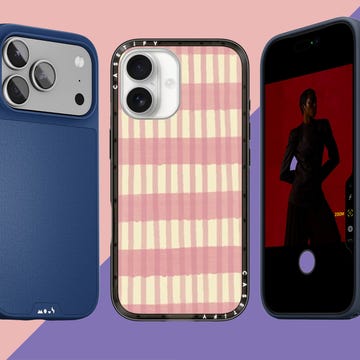
Best iPhone cases for style and protection

Best open earbuds to shop in 2025

The best iPads to buy in 2025
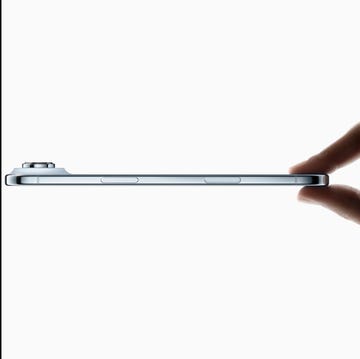
Everything Apple announced at its 2025 event












